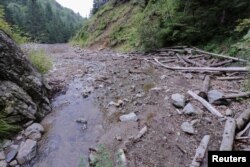skookerasbil
Platinum Member
"As a consequence, it is problematic to deduce long-term from short-term heat uptake or scale the heat uptake patterns between scenarios. These results also question simple methods to estimate long-term sea level rise from surface temperatures, and the use of deep sea proxies to represent surface temperature changes in past climate."
Nonlinearities in patterns of long-term ocean warming - Rugenstein - 2016 - Geophysical Research Letters - Wiley Online Library



More fodder..........we don't know shit about shit with regard to predicting the future in terms of warming........although we do have a school of thought that predicting the future is an exact science. And these bozo's base these assumptions on computer models.
duh
More AGW alarmist k00k losing..............



Nonlinearities in patterns of long-term ocean warming - Rugenstein - 2016 - Geophysical Research Letters - Wiley Online Library



More fodder..........we don't know shit about shit with regard to predicting the future in terms of warming........although we do have a school of thought that predicting the future is an exact science. And these bozo's base these assumptions on computer models.
duh
More AGW alarmist k00k losing..............









